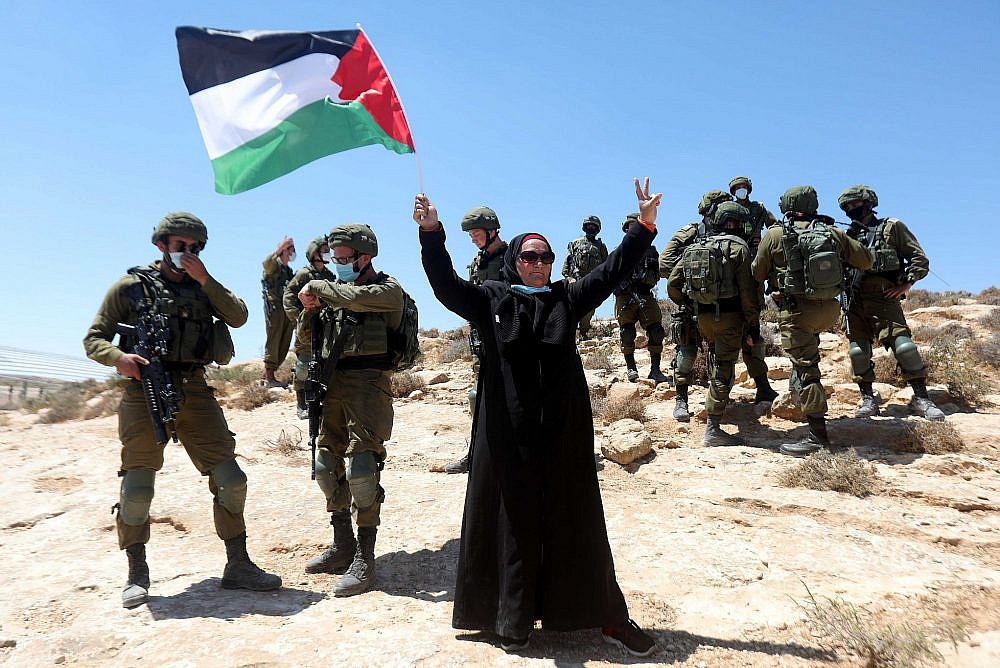This article was first published by the Carnegie Endowment for International Peace in December 2022, re-published here with permission.
Starting in mid-2022, there was a marked increase in the number of attacks by Palestinians against Israeli settlers and soldiers in the West Bank, including East Jerusalem, as well as in Israel proper. This pattern revealed significant shortcomings in Israel’s policies to control Palestinians under occupation and stabilize its rule. Israel’s stabilization strategy, inspired by modern counterinsurgency doctrine, has rested on two pillars: the employment of pacification measures to co-opt Palestinians and reliance on the Palestinian Authority (PA) to police its population on Israel’s behalf. However, many Palestinians are now fighting back against this approach, while the PA’s eroding legitimacy has only hardened the population’s refusal to accept its restrictive methods.
This situation will lead to several possible outcomes, all of which contain a multitude of complications for Israel’s preservation of the status quo with regard to the Palestinians. In the short term, with the gravitation of Israeli society toward the right and far right, which was reflected in the results of Israel’s elections in November 2022, it is likely that there will be an escalation of clashes between Palestinians and Israeli Jews in the occupied territories and within Israel’s 1948 borders. This may terminate the Oslo Accords of 1993 and lead to a new stage in Palestinian-Israeli relations, characterized by even more bloodshed, until a new political framework is devised that ends the occupation, achieves Palestinian self-determination, and guarantees rights for all.
Counterinsurgency theory
Ever since the occupation of the West Bank and Gaza Strip in June 1967, Israel’s principal aim has been to enforce its rule by managing and containing the Palestinian population, suppressing its political ambitions, and deterring Palestinians from supporting resistance activities. In addition to engaging in military interventions, house demolitions, targeted killings, and arrests, Israel has employed two more measured methods to muzzle the Palestinians.
The first has consisted of providing what are called economic facilitations for Palestinians and improving their living conditions, with the aim of manufacturing consent for Israeli rule. For instance, soon after 1967, such steps included issuing permits to Palestinian textile and footwear firms, providing low-interest loans to Palestinian investors in Gaza, and incorporating Palestinian labor into the Israeli economy. This policy continued in the post-Oslo period after 1993.
The latest such measures taken by Israel in 2022 have involved issuing 20,000 new permits for West Bank Palestinians to work in Israel and easing conditions for obtaining permits. Israel has also provided economic relief for the Gaza Strip, following the latest conflict there in August 2022. This has entailed, among other things, increasing the number of permits allowing Gazans to work in Israel. Another decision Israel made this year was to give West Bank Palestinians an opportunity to travel through Ramon Airport in southern Israel, although it subsequently put the plan on hold for reasons that remain unclear.
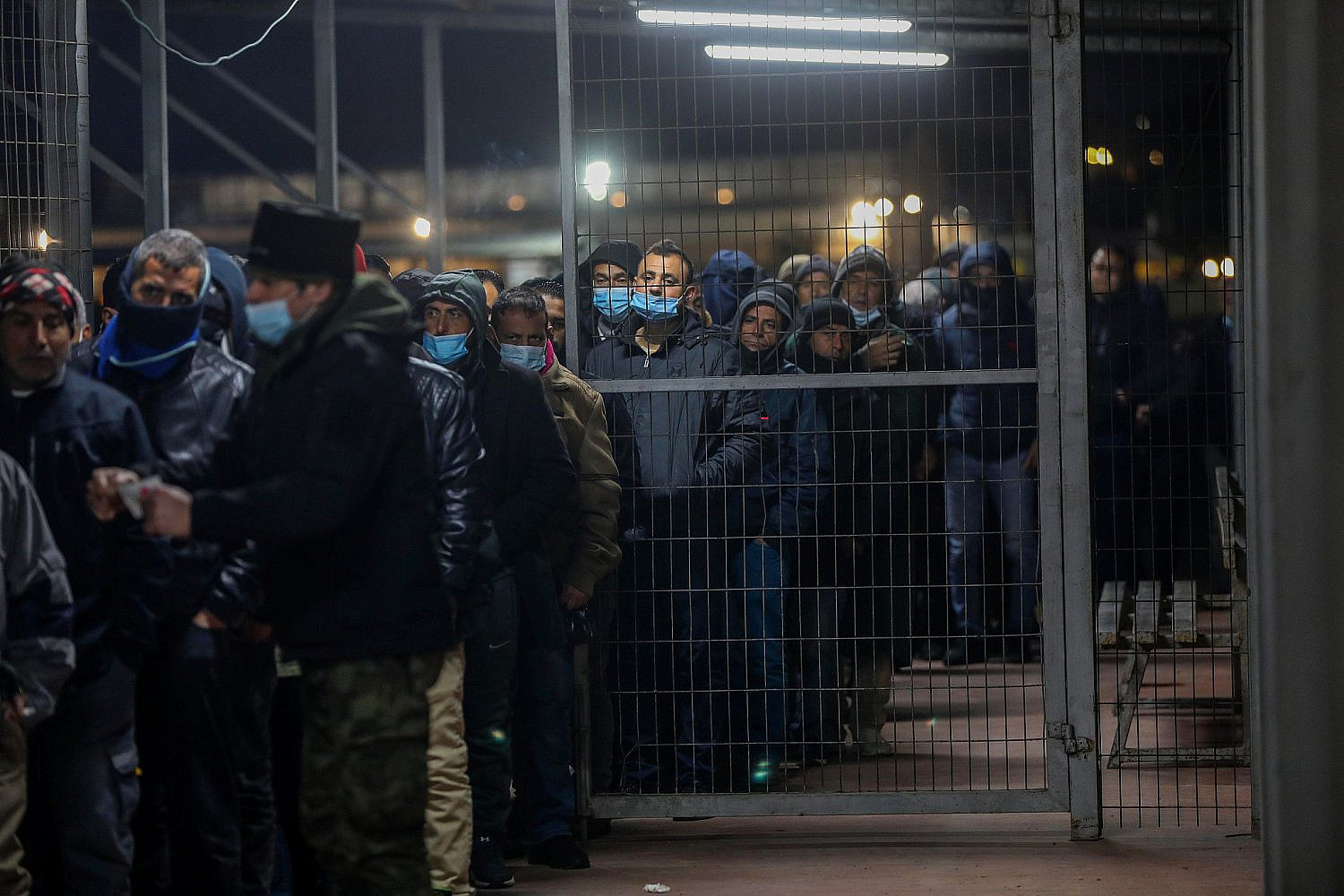
Israel’s underlying assumption is that Palestinian deprivation causes political unrest and greater opposition to Israel, while providing economic outlets increases the costs of opposing the occupation. This thinking was promoted by Moshe Dayan, Israel’s defense minister between 1967 and 1974, who sought to normalize the occupation by improving individual prosperity. As a military report from 1970 noted, “[T]he only way to avoid a potential outburst of social forces is to strive continuously for the improvement of the standard of living and the services of this underprivileged society.”
The same logic shaped Israeli policies in the occupied territories during the post-Oslo phase. Since access to all kinds of permits is conditional on an Israeli security clearance, the Palestinians’ ability to travel, conduct business, and work in Israel has been tied to political acquiescence. The permit system has thus been a disciplinary tool to reward Palestinians for their compliance or punish them for their resistance. In Gaza, Israel’s relief measures after the latest round of fighting were an incentive for Hamas not to join a future conflict with Israel, while any escalation against Israel would halt those measures. In other words, instead of ending its occupation, Israel has provided economic Band-Aids for a deep-seated political problem.
These Israeli pacification methods are rooted in counterinsurgency theory. Contrary to traditional warfare and enemy-centric approaches, which focus on lethal force to suppress insurgents, modern counterinsurgency is more population-centric. David Kilcullen, a former special adviser on counterinsurgency to the U.S. secretary of state, defined counterinsurgency as “a competition … for the right and the ability to win the hearts, minds and acquiescence of the population,” thereby deterring them from supporting an insurgency.
To mollify civilian populations, counterinsurgency theory has relied on techniques such as providing social services, promoting economic development, and co-opting local elites. And while there was a resurgent interest in counterinsurgency during the U.S.-led invasions of Afghanistan and Iraq in 2001–2003, the strategy originated in the fight against anti-colonial uprisings during the nineteenth and twentieth centuries, for example by the French in Algeria or the British in Kenya and Malaya.
The second pillar of Israel’s stabilization strategy has involved relying on the PA leadership to keep Palestinians in line politically. After its establishment in 1994 as part of the Oslo Accords, the PA not only emerged as the main manager of Palestinians’ lives, relieving Israel of that responsibility, but it also became an institution of indirect Israeli rule. The PA was made responsible for protecting Israeli security by repressing Palestinian resistance, in exchange for receiving benefits and rents.
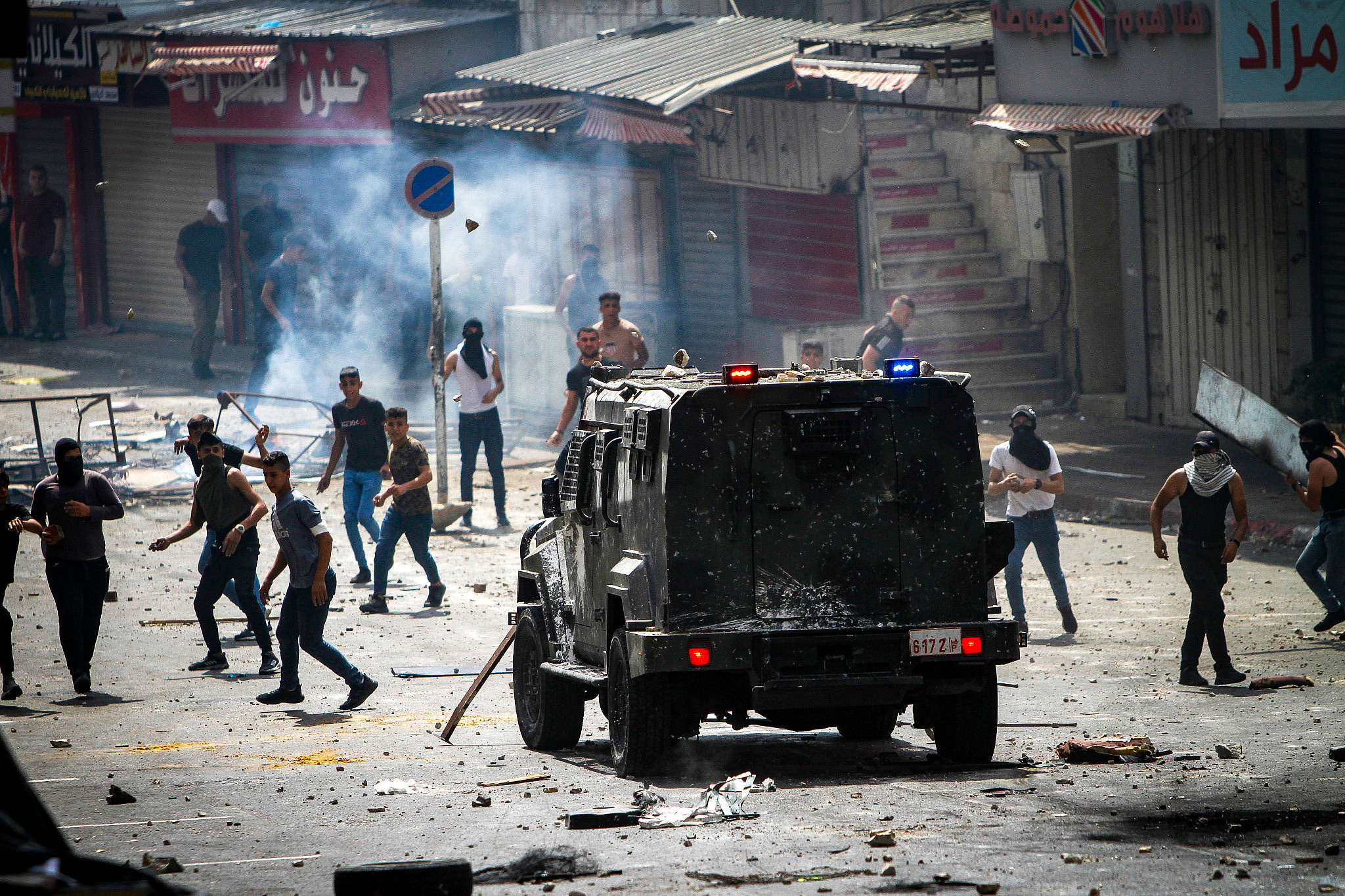
This strategy of outsourcing security practices to indigenous authorities is also in line with counterinsurgency doctrine, especially what Kilcullen calls “a bottom-up” approach, which places an emphasis on forging alliances with local elites, whether state or nonstate actors, and making them responsible for stabilization. This focus on local agency echoes the colonial practice of indirect rule employed during the nineteenth and early twentieth century, most notably by Britain and France, who ruled their colonies and mandates in collaboration with local potentates and other notables.
These methods notwithstanding, the recent wave of attacks against Israelis has revealed the shortcomings of Israel’s policy and its failure to ensure Palestinian submission. Palestinian armed resistance, driven largely by young men attacking Israeli soldiers and settlers, gradually increased after the Unity Intifada of May 2021, which followed the Israeli decision to evict Palestinian families from the Sheikh Jarrah neighborhood of East Jerusalem. Palestinian armed groups, especially in Nablus and Jenin in the northern West Bank, began contesting Israel’s “Break the Wave” campaign launched in the first half of 2022 to quell these groups.
The mood of defiance has since spread across the West Bank to include Jerusalem, Ramallah, Hebron, Bethlehem, and Qalqilya, among other cities. At the center of it was an armed group called Lion’s Den, based in the old city of Nablus. The group encompassed young men in their early twenties who belong to different political factions but who renounced factional disputes and united in combating the occupation. The group gained popularity among Palestinians, to the extent that it was identified as “a major headache” for Israel and became the target of arrests and assassinations, severely curtailing its activities.
While the current attacks remain restricted in scope, they have again exposed the limits of the Israeli pacification strategy in the West Bank. The evidence for this is the persistence of Palestinian political demands and the countless revolts against the Israeli occupation since 1967. These include the first intifada in 1987, the second intifada in 2000, and more recently the Great March of Return in 2018–2019 and the Palestinian Unity Intifada of May 2021, which spread to the West Bank, Gaza Strip, and Palestinian communities inside Israel.
It is not difficult to understand the reasons for this. While Palestinians are offered permits and other economic gestures, they also continue to be humiliated on a daily basis and face the unrelenting violence of Israel’s military and security presence, including night raids, land theft, dispossession, demolitions and forced displacement, economic marginalization, rising settler violence, invasive surveillance, mass arrests, the expansion of illegal Israeli settlements, extrajudicial killings, and, in the past fifteen years, five military operations against Gaza. The oppression with which Palestinians have to contend, alongside Israel’s complete denial of their political aspirations, has only fueled Palestinian anger and resentment.
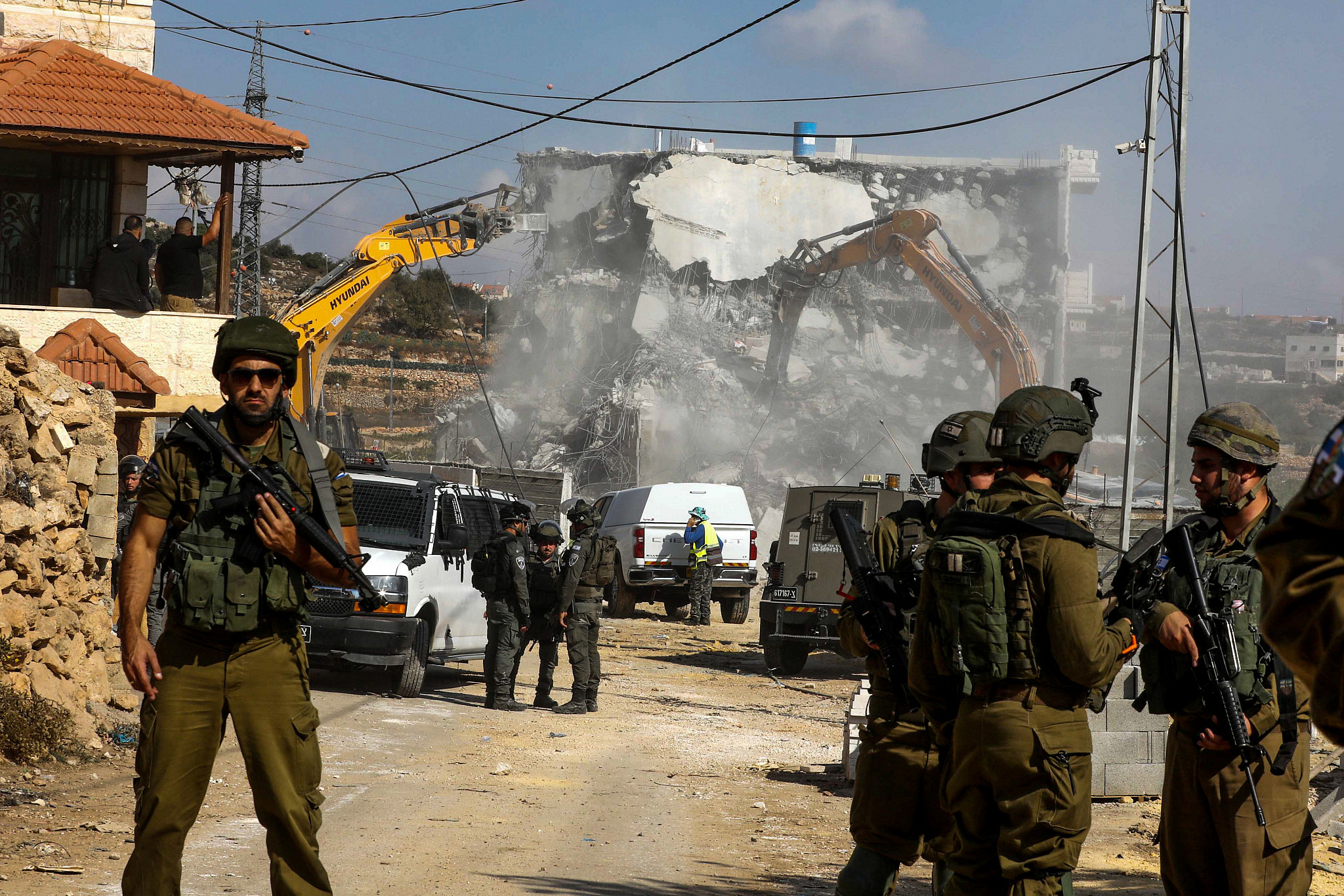
The failure of Israel’s policy to stabilize its rule in occupied Palestinian areas also stems from the growing weakness of the PA and its lack of legitimacy in the eyes of Palestinians. For the Palestine Liberation Organization (PLO), the Oslo process established a PA that would morph into a sovereign, independent state. However, with Israel preventing Palestinian statehood, the PA has largely lost its raison d’être and is viewed as an institution complicit in and benefiting from the deadlock. Israel’s contradictory behavior — needing the PA to enforce stability while also undermining it by offering Palestinians no political horizon — has effectively crippled a major instrument for controlling the population under occupation.
The PA’s credibility has also been eroding for other reasons. Palestinians view it as corrupt, have been unhappy with its unwillingness to hold presidential elections since 2005 and legislative elections since 2006, and oppose the PA’s crackdown on criticism of any kind. They are also displeased with President Mahmoud Abbas’ tightening grip on Palestinian institutions and his ruling by decree since the suspension of the Legislative Council in 2007.
The PA’s rising authoritarianism, along with its security coordination with Israel and absence of a strategy for ending the occupation, have added to Palestinian disillusionment, including among members of the PA’s own security forces. According to a poll conducted in June 2022, over 75 percent of Palestinians wanted Abbas to resign, 59 percent viewed the PA as a burden on Palestinians, and almost half supported its dissolution. The PA’s illegitimacy and weakness have been especially evident in the latest armed confrontations. The PA has failed to suppress Palestinian attacks in the northern West Bank, and its arrest of a key figure in Lion’s Den last September was followed by clashes between young Palestinians and the PA’s security forces that spread throughout the West Bank.
Future scenarios
The difficulty Israel is facing in stabilizing its rule can potentially lead to three outcomes. These outcomes are not mutually exclusive, may not all come to pass, and in some cases might only emerge in the long term. Yet all of them, if they fail to end the occupation, are unsustainable and will not bring the stability that Israel seeks.
The first possible outcome is that Israel will try to assert its authority over Palestinians by resorting to higher levels of violence. This scenario is plausible in light of the latest Israeli election results, which may well allow Benjamin Netanyahu’s return to office thanks to the backing of racist far-right parties. Once on the margins of Israeli politics, the Religious Zionism party became the third-largest in the Knesset and its members will likely hold key senior government posts. A key figure on the far right is Itamar Ben Gvir. He was a member of the extremist Kach Party, which was banned in 1988 because of its anti-Palestinian bigotry. Ben Gvir was also convicted for inciting violence and exempt from serving in the military because of his beliefs.

Ben Gvir has called for a series of measures that would only heighten Palestinian recalcitrance, further undercutting Israel’s stabilization policy. This includes the transfer abroad of “disloyal” Palestinian and Jewish citizens of Israel, the formal annexation of the West Bank , unconstrained access for Israeli Jews to Al-Aqsa Mosque, and harsher conditions for Palestinian prisoners. Ben Gvir, who once hung in his home a photograph of Baruch Goldstein, the extremist settler who killed 29 Palestinians in 1994, also wants to employ more violence against Palestinians and shoot Palestinian stone throwers. His party, Jewish Power, opposes the establishment of a Palestinian state or any negotiations with the PA.
The rise of such figures in Israeli politics and the gravitation of younger Israelis toward the right and radical right — reflecting broader preferences in Israeli society vis-à-vis the Palestinians — is likely to lead to more intense clashes between Palestinians and Israeli soldiers and Jewish settlers in the West Bank. If the Israeli government takes more provocative steps, for example changing the status of Al-Aqsa Mosque, and steps up its use of lethal force against Palestinians, then a new intifada might break out and extend to Arab areas inside the 1948 borders.
In such a case, if the PA and Palestinian factions were to participate in the intifada, it would deal a death blow to the Oslo process, especially if the PA dissolved itself and ended security coordination with Israel. This would leave the Israelis with two options for the millions of Palestinians under their control — expulsion or indefinite repression. However, this would ultimately be untenable, leaving Israel with a dilemma that it could only resolve by ending its occupation and fulfilling the Palestinians’ demand for self-determination.
A second potential outcome, one that does not exclude the first, is that Israel, seeing the PA’s growing weakness and inability to quash resistance in the West Bank, will resort to a more decentralized counterinsurgency strategy and expand its alliances with key local Palestinian figures.
These individuals could be made responsible for security and administrative affairs — conceivably through local councils under Israel’s control — in exchange for exclusive access to economic favors and other privileges. The elites with whom Israel collaborates could include businessmen and tribal figures, especially in the southern West Bank, known for its strong tribal networks. This would echo Israeli attempts in the late 1970s to weaken the PLO by setting up village leagues and building direct relations with village leaders, in an effort to establish institutions that could generate Palestinian backing for the occupation.

This scenario is already visible in places. Over the past decade, Israel has been developing relations with key business, tribal, and nongovernmental organization figures in different parts of the West Bank, bypassing the PA, which, in principle, should act as an intermediary between the Israeli administration and the Palestinian population.
For example, while Palestinians should theoretically apply for permits through the PA’s Ministry of Civil Affairs, some local elites apply directly to Israel and have relations with Israeli officers. In the southern West Bank, a small number of businessmen have even become new actors in Israel’s counterinsurgency efforts, being tasked with building an “antiterror” infrastructure and self-surveillance regime in their companies, in exchange for exclusive trade-facilitation measures.
Expanding on such arrangements would effectively divide the Palestinian population into small enclaves controlled by local leaders, leading to the further fragmentation and atomization of Palestinian society. However, just as Palestinians rejected the village leagues, viewing league members as collaborators, they may also reject major Israeli reliance on local Palestinian elites. This would be even truer if an alternative Palestinian leadership were in power, one with a clear strategy to secure Palestinians’ rights.
A third possible outcome is that the PA will collapse and Israel will move to reestablish a military government in the West Bank. This would take Palestinians back to the pre-Oslo era when Israel directly governed their lives and managed their administrative and security affairs through the Israeli Civil Administration.
However, such an outcome is less likely to occur, for two main reasons. First, it would involve major financial costs for Israel. Indeed, one of the factors behind the Oslo process and the establishment of the PA as a mechanism of indirect rule was that direct rule was becoming financially and militarily burdensome for Israel, especially after the outbreak of the first intifada in 1987. The establishment of the PA, therefore, was convenient in that Israel retained “the authority of the sovereign in the [occupied] territories — without the obligations,” as a former adviser to the late prime minister Ariel Sharon once put it.
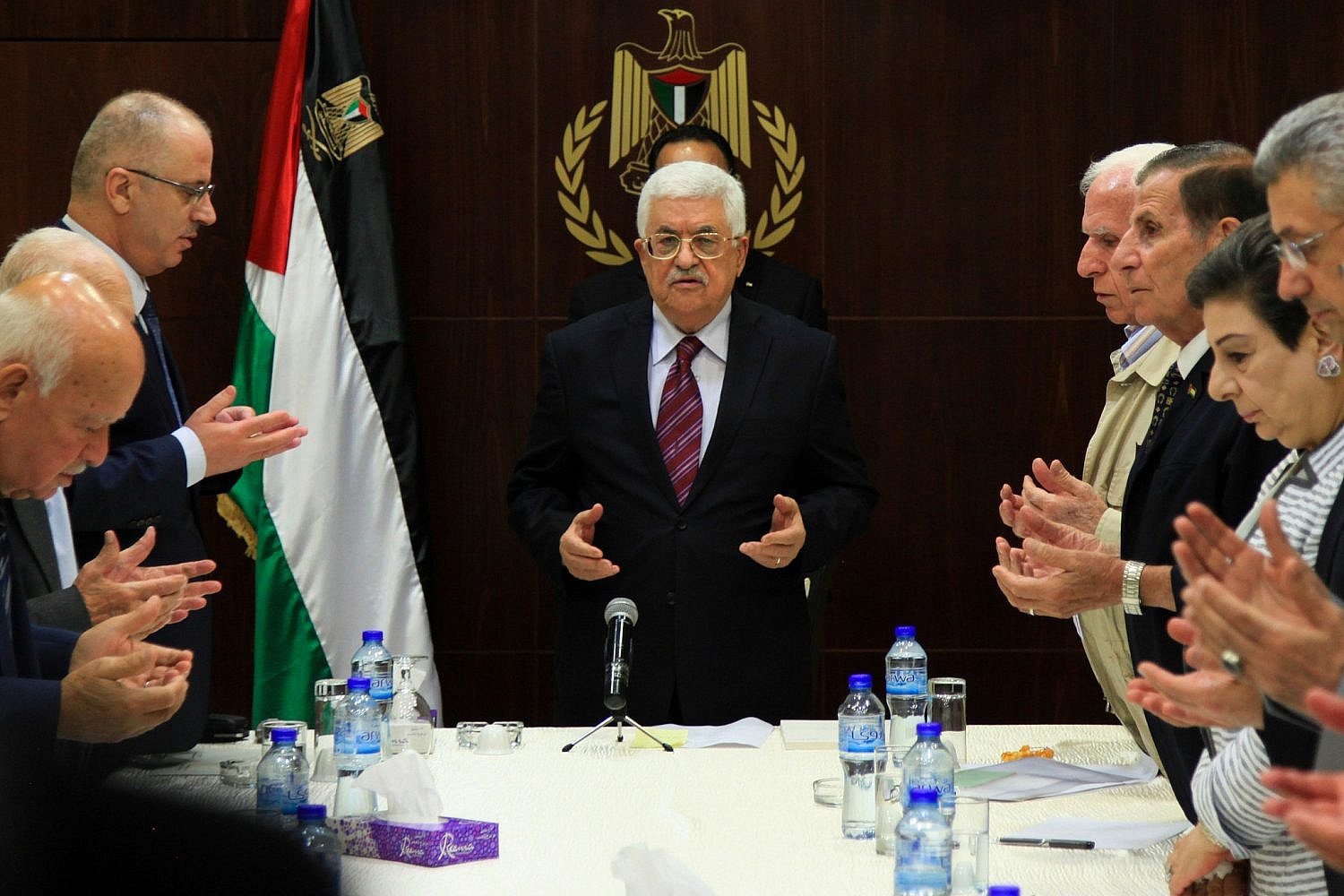
The second reason is that the geopolitical context in which the reestablishment of direct Israeli military rule would take place has changed, especially in the shadow of Russian actions in Ukraine. Just as Russia’s efforts to impose a governance structure on parts of Ukraine led to global condemnation, so too might such behavior by Israel result in similar reactions, which Israeli leaders would want to avoid. Seen in this light, Israel’s stabilization methods are likely to be challenged not only by Palestinians but by the international community as well, especially amid shifts in perceptions of Israel such as its depiction as an apartheid state by major international human rights organizations.
The fact that the Israeli system of control is facing strong Palestinian pushback, and that the possible ways open to Israelis to escape from this situation would only make matters worse for them, shows that their strategy cannot prevail indefinitely. The problem is that Israeli decisionmakers are unwilling to consider the only viable option that would satisfy Palestinians in the long-term. This would involve ending the occupation; fulfilling the Palestinians’ longing for freedom, justice, and dignity; and guaranteeing the right to political, civil, socioeconomic, and cultural equality for all citizens.

